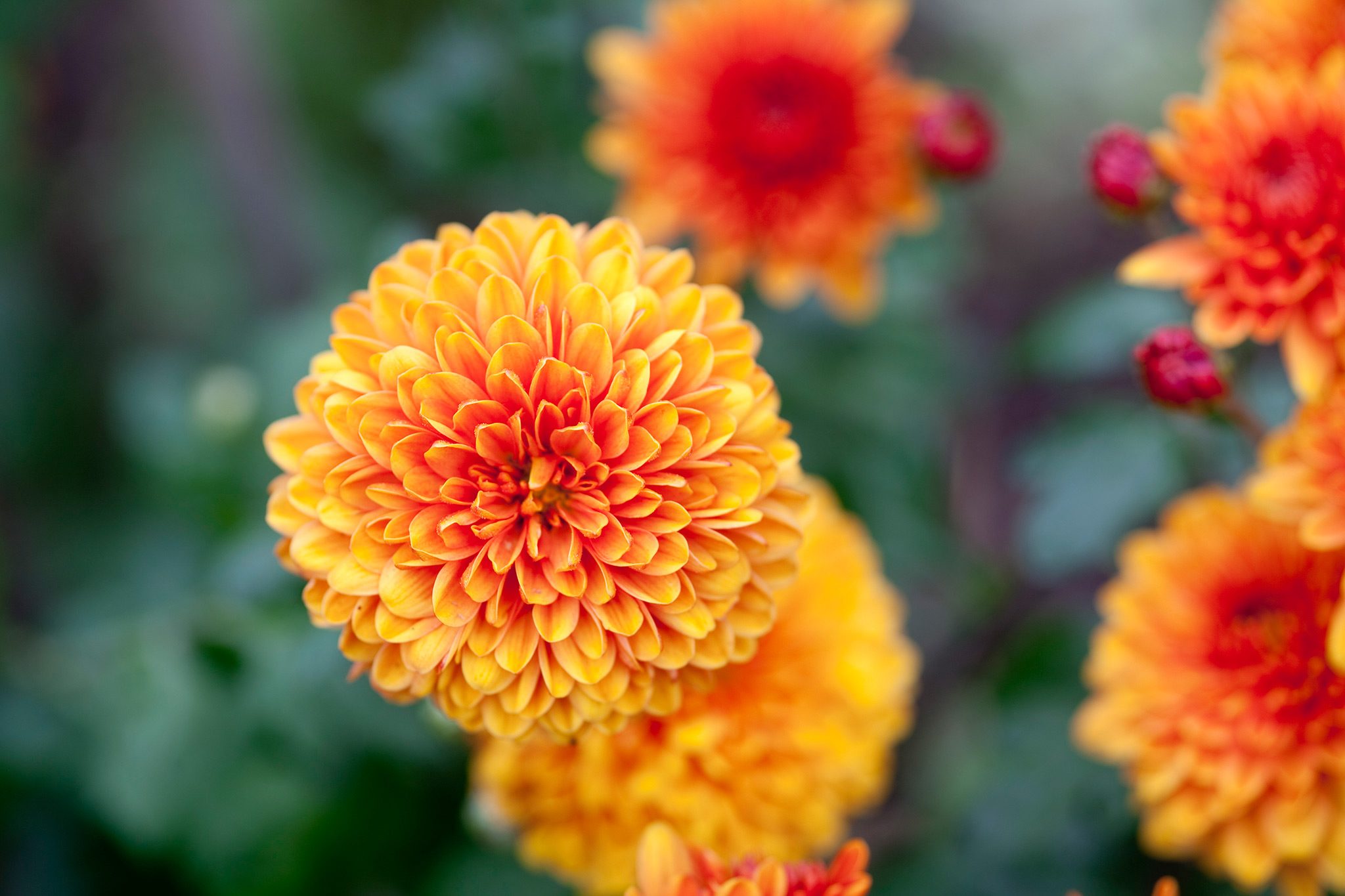
It’s November, the month of the chrysanthemum! This month, we’re talking about the mum, an Chinese flower that’s literally thousands of years old. What is this gorgeous fall flower’s history? Read on and find out!
Chrysanthemums, or “mums,” were first cultivated in China in about the 15th century BC. According to ancient pottery engravings, the mum looked very similar to the flower that we know and love today. The ancient Chinese name for chrysanthemum is “Chu,” and mums were often used for healing, garnishes to dishes, and celebrations, as the people believed that the bloom had “the power of life.” There is even a Chinese city, Chu-Hsien, which was named after the mum (it means “Chrysanthemum City”).
The chrysanthemum made its way over to Japan in the 700s, who loved the flower so much that it was used for the crest and seal for the Emperor himself. As well as being used in the Emperor’s crest, the mum is often used to represent influential Japanese families. The chrysanthemum used for the Japanese families is called “Kikumon,” (“Kiku” for chrysanthemum and “Mon” for crest). The highest honour in Japan, given to individuals for distinguished service, is the “Supreme Order of the Chrysanthemum.”
Chrysanthemums were introduced to Europe in the 1600s, who, instead of using the flower to represent stature, used it to symbolise death, and used it for funerals and graves. The first English chrysanthemum seedlings were raised by Short and Freestone, but the flower’s biggest supporter was John Salter. He had a nursery in Versailles in 1838, where he bred a number of seedlings, including “Annie Salter” and “Queen of England,” and both of which became very popular over the following century. During the French Revolution, John Salter set up a nursery in Hammersmith, London, where he continued to grow new and different species of mums.
The English name for chrysanthemum comes from the Greek words chrysos (“gold”) and anthemon (“flower”). All chrysanthemums belong to the daisy family, or the Asteraceae family, also known as the Compositae family. There is around 20,000 varieties of mums, and over 40 species that occur in the wild.
In the Victorian era, mums were used to express well wishes, while in Buddhism, they are often offerings because they have powerful Yang energy. In Chinese culture, chrysanthemums represent longevity and good luck. In contrast, Belgium and Austria often use mums as memorial flowers, so there are some very different cultural meanings out there!
In addition, each colour of mums means something different. As with many red flowers, red mums represent love and passion. Yellow chrysanthemums symbolise neglected love and sorrow, while white mums mean loyalty and honesty. Purple mums are used to wish someone to get well. In general, chrysanthemums mean devotion, happiness, longevity, and joy.
Chrysanthemums are perhaps one of the best-known autumnal flowers in the world. Now that you know what these beautiful blooms represent, be careful who you give them to and when you give them, because depending on where you are, you may get a very different reaction than the one you were expecting. Happy November!


